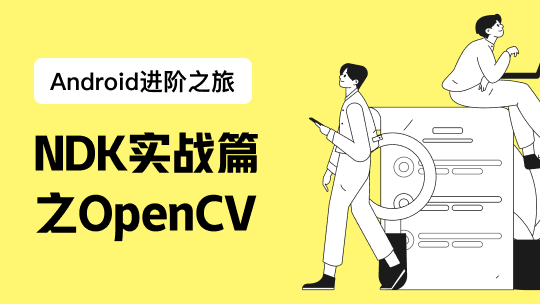[toc]
前言
最近在学习Spring Boot相关的课程,过程中以笔记的形式记录下来,方便以后回忆,同时也在这里和大家探讨探讨,文章中有漏的或者有补充的、错误的都希望大家能够及时提出来,本人在此先谢谢了!
开始之前呢,希望大家带着几个问题去学习:
1、Spring Boot 自动装配是什么?
2、这个功能在什么时代背景下发明产生的?
3、这个功能有什么用?
4、怎么实现的?
5、优点和缺点是什么?
6、这个功能能应用在工作中?
这是对自我的提问,我认为带着问题去学习,是一种更好的学习方式,有利于加深理解。好了,接下来进入主题。
1、起源
在上篇文章中我们讲到 Spring 注解虽然可以代替以往XML的形式,帮助我们自动注册Bean以及初始化组件,简化我们的开发,但还是做不到真正意义上的自动装配,今天我们就来讲讲 Spring Boot 是如何深度整合 Spring 注解编程模型、@Enable 模块驱动及条件装配等 Spring 原生特性来实现自动装配的。
注:本篇文章所用到的 Spring Boot版本是 2.1.6.BUILD-SNAPSHOT
2、Spring Boot 自动装配实现
我们都知道 Spring Boot 的启动过程非常简单,只需要启动一个 main 方法,项目就可以运行,就算依赖了诸多外部模块如:MVC、Redis等,也不需要我们进行过多的配置,那它的底层原理是什么呢?接下来,我们就一起去看一看。
我们先来看一段 Spring Boot 的启动类代码:
@SpringBootApplication
public class LoongSpringBootApplication {
public static void main(String[] args) {
SpringApplication.run(LoongSpringBootApplication.class, args);
}
}
我们需要关注的是 @SpringBootApplication 这个注解:
@Target(ElementType.TYPE)
@Retention(RetentionPolicy.RUNTIME)
@Documented
@Inherited
@SpringBootConfiguration
@EnableAutoConfiguration
@ComponentScan(excludeFilters = { @Filter(type = FilterType.CUSTOM, classes = TypeExcludeFilter.class),
@Filter(type = FilterType.CUSTOM, classes = AutoConfigurationExcludeFilter.class) })
public @interface SpringBootApplication {
@AliasFor(annotation = EnableAutoConfiguration.class)
Class<?>[] exclude() default {};
@AliasFor(annotation = EnableAutoConfiguration.class)
String[] excludeName() default {};
@AliasFor(annotation = ComponentScan.class, attribute = "basePackages")
String[] scanBasePackages() default {};
@AliasFor(annotation = ComponentScan.class, attribute = "basePackageClasses")
Class<?>[] scanBasePackageClasses() default {};
}
我们来看一看它的组成部分:
@SpringBootConfiguration:它里面标注了@Configuration注解,上篇文章说过,表明这是个配置类,功能与@Configuration无异。@EnableAutoConfiguration:这个就是实现自动装配的核心注解,是用来激活自动装配的,其中默认路径扫描以及组件装配、排除等都通过它来实现。@ComponentScan:上篇文章我们讲过这是用来扫描被@Component标注的类 ,只不过这里是用来过滤 Bean 的,指定哪些类不进行扫描,而且用的是自定义规则。Class<?>[] exclude():根据class来排除,排除指定的类加入spring容器,传入的类型是class类型。且继承自@EnableAutoConfiguration中的属性。String[] excludeName():根据class name来排除,排除特定的类加入spring容器,参数类型是class的全类名字符串数组。同样继承自@EnableAutoConfiguration。String[] scanBasePackages():可以指定多个包名进行扫描。继承自@ComponentScan。Class<?>[] scanBasePackageClasses():可以指定多个类或接口的class,然后扫描 class 所在包下的所有组件。同样继承自@ComponentScan。
2.1、@EnableAutoConfiguration 实现
上面我们说到 @EnableAutoConfiguration 是实现自动装配的核心注解,是用来激活自动装配的,看注解前缀我们应该知道是上篇文章中所讲的 Spring @Enable 模块驱动的设计模式,所以它必然会有 @Import 导入的被 @Configuration 标注的类或实现 ImportSelector 或 ImportBeanDefinitionRegistrar 接口的类。接着,我们来看看它的定义:
@Target(ElementType.TYPE)
@Retention(RetentionPolicy.RUNTIME)
@Documented
@Inherited
@AutoConfigurationPackage
@Import(AutoConfigurationImportSelector.class)
public @interface EnableAutoConfiguration {
...
}
可以看到它由两部分组成:
@AutoConfigurationPackage:这是用来将启动类所在包,以及下面所有子包里面的所有组件扫描到Spring容器中,这里的组件是指被@Component或其派生注解标注的类。这也就是为什么不用标注@ComponentScan的原因。@Import(AutoConfigurationImportSelector.class):这里导入的是实现了ImportSelector接口的类,组件自动装配的逻辑均在重写的selectImports方法中实现。
接下来我们就来看看这两者具体是怎么实现的。
2.1.1、 获取默认包扫描路径
我们先来看看 Spring Boot 是如何通过 @AutoConfigurationPackage 注解获取默认包扫描路径的,进入它的实现:
@Target(ElementType.TYPE)
@Retention(RetentionPolicy.RUNTIME)
@Documented
@Inherited
@Import(AutoConfigurationPackages.Registrar.class)
public @interface AutoConfigurationPackage {
}
可以看到它是通过 @Import 导入了 AutoConfigurationPackages.Registrar 类,该类实现了 ImportBeanDefinitionRegistrar 接口,所以按照上篇文章所讲的,它是在重写的方法中直接注册相关组件。继续往下:
static class Registrar implements ImportBeanDefinitionRegistrar, DeterminableImports {
@Override
public void registerBeanDefinitions(AnnotationMetadata metadata, BeanDefinitionRegistry registry) {
register(registry, new PackageImport(metadata).getPackageName());
}
....
}
private static final class PackageImport {
private final String packageName;
PackageImport(AnnotationMetadata metadata) {
this.packageName = ClassUtils.getPackageName(metadata.getClassName());
}
....
}
这里主要是通过 metadata 元数据信息构造 PackageImport 类。先获取启动类的类名,再通过 ClassUtils.getPackageName 获取启动类所在的包名。我们接着往下看:
public static void register(BeanDefinitionRegistry registry, String... packageNames) {
if (registry.containsBeanDefinition(BEAN)) {
BeanDefinition beanDefinition = registry.getBeanDefinition(BEAN);
ConstructorArgumentValues constructorArguments = beanDefinition.getConstructorArgumentValues();
constructorArguments.addIndexedArgumentValue(0, addBasePackages(constructorArguments, packageNames));
}
else {
GenericBeanDefinition beanDefinition = new GenericBeanDefinition();
beanDefinition.setBeanClass(BasePackages.class);
beanDefinition.getConstructorArgumentValues().addIndexedArgumentValue(0, packageNames);
beanDefinition.setRole(BeanDefinition.ROLE_INFRASTRUCTURE);
registry.registerBeanDefinition(BEAN, beanDefinition);
}
}
最后就是将这个包名保存至 BasePackages 类中,然后通过 BeanDefinitionRegistry 将其注册,进行后续处理,至此该流程结束。
2.1.2、获取自动装配的组件
该部分就是实现自动装配的入口,从上面得知这里也是通过 @Import 来实现的,来看看导入的类:
public class AutoConfigurationImportSelector implements DeferredImportSelector, BeanClassLoaderAware,
ResourceLoaderAware, BeanFactoryAware, EnvironmentAware, Ordered {
....
@Override
public String[] selectImports(AnnotationMetadata annotationMetadata) {
if (!isEnabled(annotationMetadata)) {
return NO_IMPORTS;
}
AutoConfigurationMetadata autoConfigurationMetadata = AutoConfigurationMetadataLoader
.loadMetadata(this.beanClassLoader);
AutoConfigurationEntry autoConfigurationEntry = getAutoConfigurationEntry(autoConfigurationMetadata,
annotationMetadata);
return StringUtils.toStringArray(autoConfigurationEntry.getConfigurations());
}
....
}
主要关注重写的 selectImports 方法,其中 AutoConfigurationMetadata autoConfigurationMetadata = AutoConfigurationMetadataLoader.loadMetadata(this.beanClassLoader); 是加载自动装配的元信息。而AutoConfigurationEntry autoConfigurationEntry = getAutoConfigurationEntry(autoConfigurationMetadata, annotationMetadata)该方法返回的就是自动装配的组件,我们进去看看:
protected AutoConfigurationEntry getAutoConfigurationEntry(AutoConfigurationMetadata autoConfigurationMetadata,
AnnotationMetadata annotationMetadata) {
if (!isEnabled(annotationMetadata)) {
return EMPTY_ENTRY;
}
// 获取 @EnableAutoConfigoration 标注类的元信息,也就是获取该注解 exclude 和 excludeName 属性值
AnnotationAttributes attributes = getAttributes(annotationMetadata);
// 该方法就是获取自动装配的类名集合
List<String> configurations = getCandidateConfigurations(annotationMetadata, attributes);
// 去除重复的自动装配组件,就是将List转为Set进行去重
configurations = removeDuplicates(configurations);
// 这部分就是根据上面获取的 exclude 及 excludeName 属性值,排除指定的类
Set<String> exclusions = getExclusions(annotationMetadata, attributes);
checkExcludedClasses(configurations, exclusions);
configurations.removeAll(exclusions);
// 这里是过滤那些依赖不满足的自动装配 Class
configurations = filter(configurations, autoConfigurationMetadata);
fireAutoConfigurationImportEvents(configurations, exclusions);
// 返回的就是经过一系列去重、排除、过滤等操作后的自动装配组件
return new AutoConfigurationEntry(configurations, exclusions);
}
该方法中就是先获取待自动装配组件的类名集合,然后通过一些列的去重、排除、过滤,最终返回自动装配的类名集合。主要关注 getCandidateConfigurations(annotationMetadata, attributes) 这个方法,里面是如何获取自动装配的类名集合:
protected List<String> getCandidateConfigurations(AnnotationMetadata metadata, AnnotationAttributes attributes) {
List<String> configurations = SpringFactoriesLoader.loadFactoryNames(getSpringFactoriesLoaderFactoryClass(),
getBeanClassLoader());
Assert.notEmpty(configurations, "No auto configuration classes found in META-INF/spring.factories. If you "
+ "are using a custom packaging, make sure that file is correct.");
return configurations;
}
其中getSpringFactoriesLoaderFactoryClass()返回的是EnableAutoConfiguration.class。 继续往下,执行的是 SpringFactoriesLoader#loadFactoryNames 方法:
public final class SpringFactoriesLoader {
...
public static final String FACTORIES_RESOURCE_LOCATION = "META-INF/spring.factories";
public static List<String> loadFactoryNames(Class<?> factoryClass, @Nullable ClassLoader classLoader) {
// 前面可以看到,这里的 factoryClass 是 EnableAutoConfiguration.class
String factoryClassName = factoryClass.getName();
return loadSpringFactories(classLoader).getOrDefault(factoryClassName, Collections.emptyList());
}
private static Map<String, List<String>> loadSpringFactories(@Nullable ClassLoader classLoader) {
MultiValueMap<String, String> result = cache.get(classLoader);
if (result != null) {
return result;
}
try {
Enumeration<URL> urls = (classLoader != null ?
classLoader.getResources(FACTORIES_RESOURCE_LOCATION) :
ClassLoader.getSystemResources(FACTORIES_RESOURCE_LOCATION));
result = new LinkedMultiValueMap<>();
while (urls.hasMoreElements()) {
URL url = urls.nextElement();
UrlResource resource = new UrlResource(url);
Properties properties = PropertiesLoaderUtils.loadProperties(resource);
for (Map.Entry<?, ?> entry : properties.entrySet()) {
String factoryClassName = ((String) entry.getKey()).trim();
for (String factoryName : StringUtils.commaDelimitedListToStringArray((String) entry.getValue())) {
result.add(factoryClassName, factoryName.trim());
}
}
}
cache.put(classLoader, result);
return result;
}
catch (IOException ex) {
throw new IllegalArgumentException("Unable to load factories from location [" +
FACTORIES_RESOURCE_LOCATION + "]", ex);
}
}
...
}
最终的实现逻辑都在这里,主要过程如下:
(1)搜索classpath路径下以及所有外部jar包下的META-INF文件夹中的spring.factories文件。主要是spring-boot-autoconfigur包下的
# Initializers
org.springframework.context.ApplicationContextInitializer=\
org.springframework.boot.autoconfigure.SharedMetadataReaderFactoryContextInitializer,\
org.springframework.boot.autoconfigure.logging.ConditionEvaluationReportLoggingListener
# Application Listeners
org.springframework.context.ApplicationListener=\
org.springframework.boot.autoconfigure.BackgroundPreinitializer
# Auto Configuration Import Listeners
org.springframework.boot.autoconfigure.AutoConfigurationImportListener=\
org.springframework.boot.autoconfigure.condition.ConditionEvaluationReportAutoConfigurationImportListener
# Auto Configuration Import Filters
org.springframework.boot.autoconfigure.AutoConfigurationImportFilter=\
org.springframework.boot.autoconfigure.condition.OnBeanCondition,\
org.springframework.boot.autoconfigure.condition.OnClassCondition,\
org.springframework.boot.autoconfigure.condition.OnWebApplicationCondition
# Auto Configure
org.springframework.boot.autoconfigure.EnableAutoConfiguration=\
org.springframework.boot.autoconfigure.data.redis.RedisAutoConfiguration,\
org.springframework.boot.autoconfigure.jdbc.JdbcTemplateAutoConfiguration,\
org.springframework.boot.autoconfigure.data.redis.RedisReactiveAutoConfiguration,\
org.springframework.boot.autoconfigure.data.redis.RedisRepositoriesAutoConfiguration,\
org.springframework.boot.autoconfigure.web.client.RestTemplateAutoConfiguration,\
org.springframework.boot.autoconfigure.web.reactive.WebFluxAutoConfiguration,\
org.springframework.boot.autoconfigure.web.servlet.DispatcherServletAutoConfiguration,\
org.springframework.boot.autoconfigure.web.servlet.WebMvcAutoConfiguration
...
可以看到其中内容,存储的是key-value格式的数据,且key是一个类的全路径名称,value是多个类的全路径名称,且以逗号分割。
(2)将所有的spring.factories文件转成Properties格式,将里面key-value格式的数据转成Map,该Map的value是一个List,之后将相同Key的value合并到List中,将该Map作为方法返回值返回。
(3)返回到 loadFactoryNames 方法,通过上面得知factoryClassName的值为EnableAutoConfiguration,所以通过 getOrDefault(factoryClassName, Collections.emptyList())方法,获取 key 为EnableAutoConfiguration的类名集合。
ps:
getOrDefault第一个入参是key的name,如果key不存在,则直接返回第二个参数值
至此,流程结束,最后返回的就是自动装配的组件,其中有我们比较熟悉的Redis、JDBC、SpringMVC等,可以看到一个特点,这些自动装配的组件都是以 AutoConfiguration 结尾。但该组件列表只是候选组件,因为后面还有去重、排除、过滤等一系列操作,这里就不再详细述说。下面我们来看看自动装配的组件内部是怎么样的。
2.2、自动装配的组件内部实现
就拿比较熟悉的 Web MVC 来看,看看是如何实现 Web MVC 自动装配的。先来代码组成部分:
@Configuration
@ConditionalOnWebApplication(type = ConditionalOnWebApplication.Type.SERVLET)
@ConditionalOnClass({ Servlet.class, DispatcherServlet.class, WebMvcConfigurer.class })
@ConditionalOnMissingBean(WebMvcConfigurationSupport.class)
@AutoConfigureOrder(Ordered.HIGHEST_PRECEDENCE + 10)
@AutoConfigureAfter({ DispatcherServletAutoConfiguration.class, TaskExecutionAutoConfiguration.class,
ValidationAutoConfiguration.class })
public class WebMvcAutoConfiguration {
...
@Configuration
@Import(EnableWebMvcConfiguration.class)
@EnableConfigurationProperties({WebMvcProperties.class, ResourceProperties.class})
@Order(0)
public static class WebMvcAutoConfigurationAdapter implements WebMvcConfigurer, ResourceLoaderAware {
...
@Bean
@ConditionalOnBean(View.class)
@ConditionalOnMissingBean
public BeanNameViewResolver beanNameViewResolver() {
...
}
...
}
@Configuration
public static class EnableWebMvcConfiguration extends DelegatingWebMvcConfiguration {
@Bean
@Override
public RequestMappingHandlerAdapter requestMappingHandlerAdapter() {
...
}
@Bean
@Primary
@Override
public RequestMappingHandlerMapping requestMappingHandlerMapping() {
...
}
}
...
}
注解部分:
@Configuration:这个大家都比较熟悉,标识该类是一个配置类@ConditionalXXX:这是上篇文章所讲的 Spring 条件装配,只不过经由 Spring Boot 扩展形成了自己的条件化自动装配,且都是@Conditional的派生注解。@ConditionalOnWebApplication:参数值是 Type 类型的枚举,当前项目类型是任意、Web、Reactive其中之一则实例化该 Bean。这里指定如果为 Web 项目才满足条件。@ConditionalOnClass:参数是 Class 数组,当给定的类名在类路径上存在,则实例化当前Bean。这里当Servlet.class、DispatcherServlet.class、WebMvcConfigurer.class存在才满足条件。@ConditionalOnMissingBean:参数是也是 Class 数组,当给定的类没有实例化时,则实例化当前Bean。这里指定当WebMvcConfigurationSupport该类没有实例化时,才满足条件。
- 装配顺序
@AutoConfigureOrder:参数是int类型的数值,数越小越先初始化。@AutoConfigureAfter:参数是 Class 数组,在指定的配置类初始化后再加载。@AutoConfigureBefore:参数同样是 Class 数组,在指定的配置类初始化前加载。
代码部分:
- 这部分就比较直接了,实例化了和 Web MVC 相关的Bean,如
HandlerAdapter、HandlerMapping、ViewResolver等。其中,出现了DelegatingWebMvcConfiguration类,这是上篇文章所讲的@EnableWebMvc所@Import导入的配置类。
- 这部分就比较直接了,实例化了和 Web MVC 相关的Bean,如
可以看到,在Spring Boot 自动装配的类中,经过了一系列的 @Conditional 条件判断,然后实例化某个模块需要的Bean,且无需我们配置任何东西,当然,这都是默认实现,当这些不满足我们的要求时,我们还得手动操作。
3、总结
关于Spring boot自动装配的内容就告一段落,不难看出Spring Boot自动装配所依赖的注解驱动、@Enable模块驱动、条件装配等特性均来自 Spring Framework。而自动装配的配置类均来源于spring.factories文件中。核心则是基于“约定大于配置”理念,通俗的说,就是Spring boot为我们提供了一套默认的配置,只有当默认的配置不满足我们的需求时,我们再去修改默认配置。当然它也存在缺点就是组件的高度集成,使用的时候很难知道底层实现,加深了理解难度。
以上就是本章的内容,如过文章中有错误或者需要补充的请及时提出,本人感激不尽。
参考:
《Spring Boot 编程思想》













